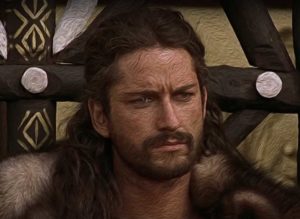10 Facts About Attila The Hun
The mighty ruler of Huns, Attila, known as Attila the Hun, under his ruthless rule ruled by an enormous territory stretching from the Ural River to the east to the Rhine in the west, from the Danube in the south to the Baltic Sea in the north.
Through her numerous legends, he gained the reputation of the greatest barbarian leader of antique times.
For Huns existed only wins because everything else is an outrage. Huns from their Pannonian center regularly invaded the territories of the Roman Empire, which at that time already exhale and goes out. They killed messengers, looted villages and cities, killed people and burned houses.
After the invasion of Italy in 452 Attila was about to lead an attack on Constantinople, who had been stopped paying tribute after the Hun leader went to Italy. However, Attila’s plans did not come true because in 453 he suddenly died.
History describes him as the embodiment of cruelty. He died on his wedding day, although he had many wives.
Ally of Attila and Rome
Actually, Attila was an ally of Rome for a long time, until 451 (Catalaunum battle). Attila faced Aetius. After Catalaunum’s battle in 452, Attila penetrated Italy out of revenge, but suffered a huge loss in the military.
Hunic Empire was greater than the Roman Empire
 The surface of the Empire of Attila was greater than the Roman Empire, but it was short-lived.
The surface of the Empire of Attila was greater than the Roman Empire, but it was short-lived.
The Huns were nomadic people who lived in Eastern Europe, the Caucasus and Central Asia between the 4th and 6th centuries.
The Hunnic state was at the height of power at the beginning of the 5th century. It stretched from Volga, across southern Russia, Romania, Hungary, Czech Republic, Slovakia to southern and central Germany. The center of the state was in Panonian areas. Numerous peoples have accepted their domination (Hazrat, Anti, Alan, Ostrogoth, Gepidi, Quadi, etc.).
Attila means father
Attila had a Gothic name (“Attila” is a minor of the Gothic word “atta” meaning “father”). His castle was dominated by Gothic customs, and his memorial was preserved in the Gothic folk tale. He entered the stories and legends of many ancient peoples, and today serves as a symbol of cruelty.
The first and only defeat
In 451, with an army of 200,000 Huns, Atila attacked Gallia, leaving the ruins behind. The Romans under the leadership of General Flavius Aetius formed an alliance with the Visigothic King Teodoric I, who lost his life in that battle.
However, Atila was defeated, which was a big defeat for the Huns, but that is why he wanted revenge and attack Romans next year.
He killed his brother
After the death of his uncle, Attila and his older brother Bled ruled from 434 until 445 when he killed his brother during hunting, after which he was given full authority. Attila united all the Huns tribes and peoples from Volga to the territory of today’s Germany.
The period of their common reign is described by historians as a time of disturbance and disloyalty, and it is assumed that the Bled had a greater reputation among Hun’s than Attila.
He died on the wedding night
Although he had many women, in 453 Attila decided to marry once more, with a woman named Ildiko. The day of their wedding was going on in a fierce drinking and celebration, and Attila was found dead on the following day.
Apparently he died of an overdose of alcohol and heavy bleeding from the nose, although there are stories that his death interpreted as a conspiracy in which he was involved Emperor Marcian.
Where is the tomb of Attila the Hun?
There are various legends that differently interpret one of the greatest world mysteries.
Attila, the ruler of Huns, will be remembered in history through many stories about the victorious underpinnings, the successful unification of the tribes of the Huns and the creation of the great Hun Republic. But what is still unknown is the exact place of his tomb.
According to the legend, the body of the ruler of the Huns was laid in a coffin made of gold, silver and iron, and along with him was buried a part of the treasure that he robbed during his exhortations. After Attila’s death, a large ceremony of mourning was organized, and the whole empire was mourned.
Sons of Attila
Attila had six sons – Csaba, Ellac, Ernak, Dengizich, Erp and Eitil. After his death, the Hunnic empire was inherited by Ellac, Ernak and Dengizich. The oldest, Ellac, was known as Attila II. but he did not rule for a long time, he died in a conflict known as the Battle of Ned in 454. (You can read also Children Of The Most Notorious, Evil Men In The World)
Sword of Attila
There is a legend saying that his sword was in fact the sword of Mars. The legend of Huns says that Attila once came across a shepherd and wanting to speak to him when he noticed a bloody trail in the grass.
The shepherd told him to follow that trace, which Atila did, and from the grass, took out the throbbed sword, which rose high. Attila is believed that this is a prophecy for him to be one of the great world leaders of the will of God.
Rumors about cannibalism
According to legends, the Huns have plunged the tops of arrows in the juice of boiled embryos, ate raw meat, drank the blood of women… Rumors about Attila’s cannibalistic habits are not groundless. The historians wrote that they burned Tylki and killed the priests and ate them.

Comments are closed.